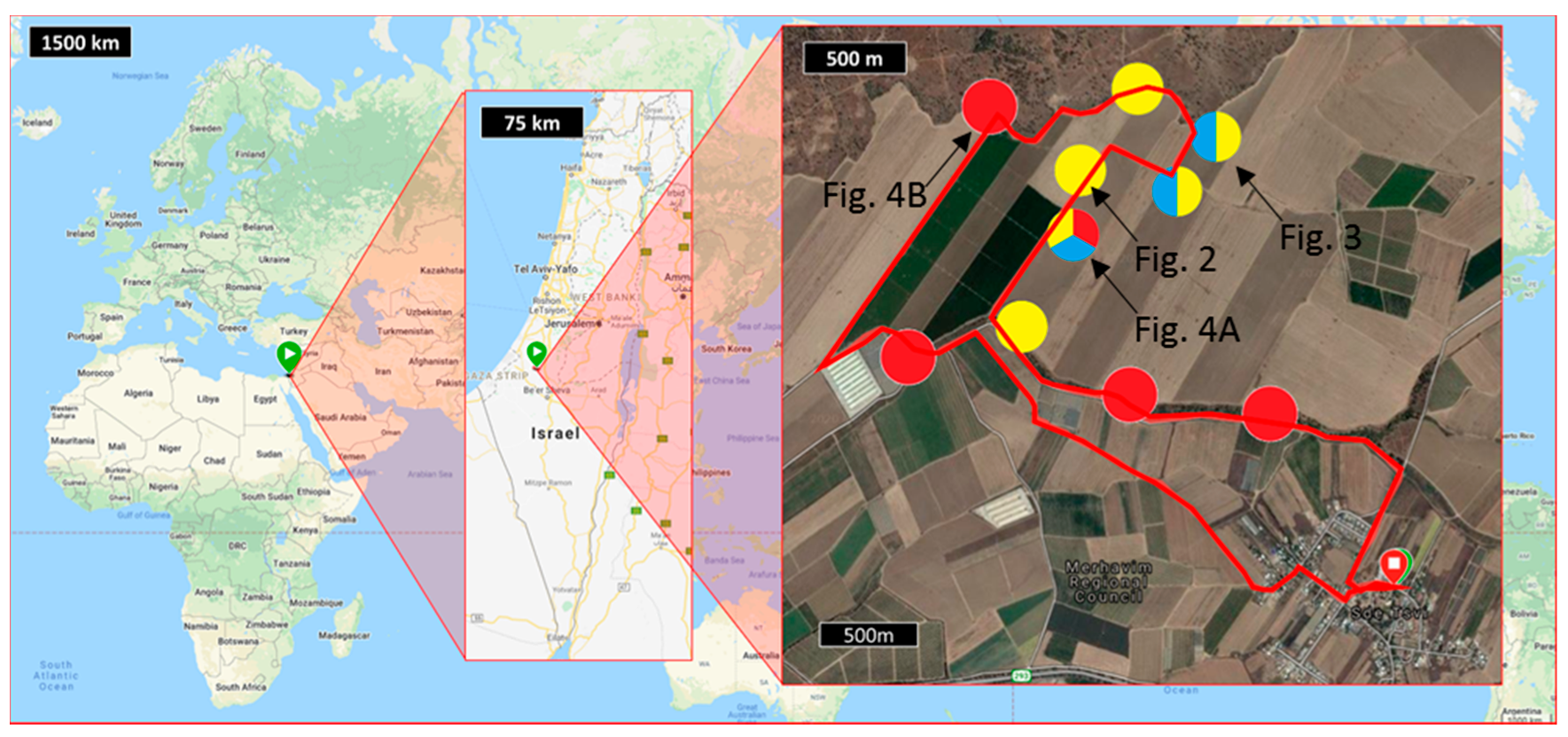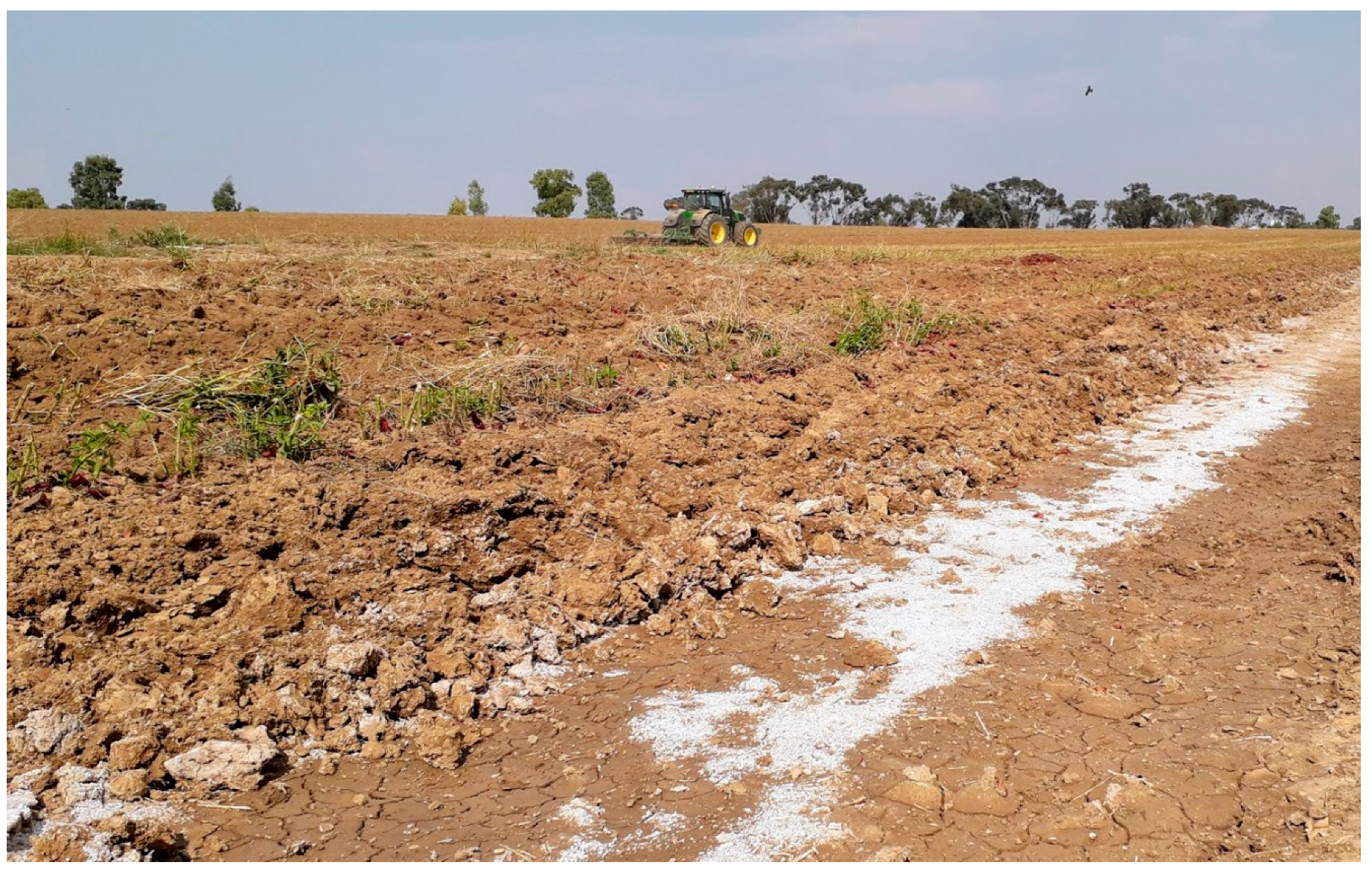Soil is one of the most important and essential resources on the globe; however, its importance is somewhat underestimated, especially in political and decision-making circles. The lack of good quality soil risks the supply of food and fiber, of clean fresh water, biodiversity and the overall protection of the ecosystem. It also reduces the potential of soil to act as a sink in the carbon cycle and may remove a central platform for the production of renewable energy sources. Despite its economic and environmental importance, soil is continuously being lost globally due to various degradation processes, with modern agriculture being a main cause of these. This is demonstrated by the fact that more than 50% of agricultural soils are moderately or highly degraded, while less than one third of natural soils are exposed to degradation processes.
Population growth and rising economic prosperity result in an increased demand for energy, food, and water. Consequently, our natural resources of soil and water are in short supply and overused. It is estimated that by 2050, the world population will surpass 9.5 billion people and an increase of 60% in our food production will be needed to feed humanity, assuming that food consumption and diet do not dramatically change by then. Consequently, unless food production efficiency improves, more cropland areas will be needed to support the expected increased demand in food consumption. Even though croplands cover only 12% of terrestrial regions, with a total area of about 15 × 106 km2, the potential to convert more land into cropland is limited, as most areas are too steep, too wet, too dry, or too cold for the commercial growth of crops. The transition of new land to croplands is usually not economical and does not meet ecological and environmental imperatives. Even though the most prominent soil degradation processes are observed at arable lands, natural soils are also prone to deterioration processes, and in a greater extent over the recent years, due to global climate change, that accelerates soil erosion and the salinization processes.
More than 75% of the people in the developed world are leaving in cities, with very limited direct interactions to the soil. Therefore, it is easy to understand why the importance of soil health and the soil degradation process is overlooked by many people; out of sight, out of mind. Nevertheless, in any trip outside of the city, to the natural landscapes or agricultural fields, soil degradation processes are easily seen. As an amateur jogger and professional soil scientist (or the other way around), at any run in the open fields, I see notable evidence of soil degradation. For this Special Issue, I decided to take a camera with me on a 10 km run at the rural area of the Northern Negev Desert, Israel (
Figure 1). The region has undulating terrain, with agricultural fields at the uplands, while the valleys are not cultivated. Along the run, I photographed visual evidence of soil degradation processes at selected locations (
Figure 2,
Figure 3 and
Figure 4) and marked the locations where soil degradation processes were observed (
Figure 1).
The observed soil degradation processes included: (1) soil salinization that is seen as salt crusts at the soil surface (
Figure 2); (2) soil compaction (
Figure 3), and soil erosion (
Figure 4). In some places, the different processes were interlinked, and in other places, only one process could be seen. In the following lines, and in the greater detail of this Special Issue, these processes will be further discussed.
Soil salinization is a major soil degradation process in the modern era, a result of extensive agriculture, global climate change, land use changes and the alteration of the hydrological conditions in many areas worldwide. Soil is considered salinized when plants in the soil are negatively affected by salinity and when the electrical conductivity of saturation extract soil water exceeds 4 dS/m, at 25 °C. When sodium salts dominate the soil salinization process, it is said that the soil is sodic, and in clayey soils, it has a great effect on the stability of the soil structure.
Six percent of terrestrial land is naturally salinized in a process termed primary soil salinization, in which salt stored in the soil or groundwater is mobilized to the land surface in the development process of a landscape. However, much greater and faster soil salinization processes are observed in cultivated lands (
Figure 2), where 20% of total cropland and 33% of irrigated croplands worldwide are salinized as a result of agricultural practices. This type of soil salinization, a result of anthropogenic activity, is termed secondary soil salinization. Salinized areas are steadily growing at a rate of 10% per year and it is estimated that more than 50% of croplands worldwide will be salinized by 2050. Naturally, the economic burden of soil salinization is very high, with the global cost of irrigation-induced salinity being in the order of US
$11 billion per year.
In this Special Issue, Goldberg et al. [
1] discussed the negative impact that the addition of different types of compost has on the soil at the first few weeks following the spread of the compost, due to an increase in soil sodicity. Piotrowski et al. [
2] and Mejri et al. [
3] shed new light on the very important, complex, and interlinked processes of salt precipitation and evaporation at porous media. The former presented an experimental work aimed to measure the permeability of salt crusts over evaporating porous media (as seen in
Figure 2), and the latter modeled evaporation and salt precipitation in porous media, under real climatic conditions of the oasis of Segdoud in southern Tunisia.
Soil compaction is a major cause of soil degradation, especially in agricultural environments. In cultivated croplands, the intensive traffic of the modern machinery and vehicles over the fields results in compaction of the soil, which alters soil pore spaces, reduce soil porosity and hydraulic conductivity and affect soil water retention characteristics. From an agronomic perspective, soil compaction affects water and nutrients transport and distribution at the root zone and accelerates soil erosion processes.
Understanding the interactions between soil compaction processes and resulted changes in soil hydraulic properties, in the pore scale, and correlating this to expected impact on the hydrological response at the field scale, is important in order to reclaim compacted soils in agricultural environments and to minimize the risk of soil compaction by improving agricultural practices. In this Special Issue, Augustin et al. [
4] characterized the risk for soil compaction, at croplands, as function of wheel load and vehicles pass frequency over the field. Their analysis is based on four years’ data acquisition from an agricultural field in Lower Saxony, Germany. The authors have shown the high intensity of vehicles passing over fields, especially during harvesting. This work emphasizes the importance of developing sustainable crop practices that will reduce soil compaction, maintain soil health and fertility, and support thrive agriculture.
Soil erosion is the displacement of the soil, by fluvial and alluvial processes, following the weathering of the soil (
Figure 4). It is estimated that every year around 75 billion tons of arable lands are being eroded, worldwide. This leads to a financial loss of about US
$400 billion per year. Soils in areas with extreme weather are more susceptible to soil erosion, as changes of the annual precipitation, strong winds, and cycles of droughts and extreme rain events accelerate soil erosion processes. On top of that, soil erosion rates are expected to rise in future decades due to global climate change. Croplands are very sensitive to erosion due to the overexploitation of land resources, the weakening of soil structure stability by the agricultural practices, and an increase of soil sodicity due to irrigation with low quality water, and soil compaction (
Figure 4A). The development of sustainable agricultural practices is essential in order to keep on feeding the world growing population, while preserving our soils and their fertility.
An example of a sustainable agricultural practice, based on an experimental study, is being presented in this Special Issue by Goldberg et al. [
1]. The authors have shown the negative impact that organic soil amendments have on soil erosion processes in the first few weeks following the spread of the amendments. The authors proposed to apply the organic soil amendments few weeks prior to the rainy season and by that to reduce the risk of soil erosion. Cama et al. [
5] reported in here on the development of a geomorphological tool, based on remote sensing, that aimed to assess soil erosion susceptibilities of different landforms. Furthermore, Karydas et al. [
6] mapped soil erosion caused by water in the Candelaro river basin, Apulia region, Italy. The authors used a model that can provide erosion maps and statistical figures at month-time intervals, by applying non data-demanding alternatives for the estimation of all erosion factors. Using this model, the authors have identified times and land uses that are the most susceptible for erosion.
To conclude: This Special Issue put together two papers related to soil salinization, one paper on soil compaction, two papers on soil erosion and one paper that connects soil sodicity with soil erosion in agricultural environments. These processes are major causes for soil loss all over the world, mainly in arable lands, but also in natural environments. Global climate change takes its toll from the soil and result in the acceleration of soil detritions processes in varied environments and setups.
This Special Issue aimed to draw attention to the important aspects of soil degradation in natural and cultivated environments and to emphasize our need to better understand soil degradation processes. In respect to food security, the development of sustainable agricultural practices that will maintain soil fertility for many decades, while providing sufficient amount of food, is essential in order to support the world’s growing population. While most of us do not feel it, as we get our food at the supermarket, we need to remember that our food is growing out of the land, and without fertile and healthy land, humanity will not have the ability to appease its nutritious demands. I hope that this issue will provoke more studies about these issues, as our understanding, and our ability to restrain soil degradation processes, in the field, are still quite limited.








